Link building is one of the most important and challenging aspects of SEO. It involves getting other websites to link back to your site, which can boost your authority, traffic, and rankings. However, link building is not easy. It requires a lot of research, outreach, and negotiation to get quality links from relevant and trustworthy sites.
One of the most popular and effective link building strategies is link exchange.
So, what is a link exchange? Link exchange, also known as link swap, backlink exchange, or reciprocal linking, is a process where two or more site owners agree to link to each other’s sites. Link swapping can be a win-win situation for both parties, as they can benefit from each other’s traffic, audience, and reputation.
However, link exchange is not without risks and challenges. If done incorrectly or excessively, link exchange can harm your SEO and even get you penalized by Google. Therefore, you need to know how to do a link exchange safely and effectively in 2023, as it is not a 100% white hat tactic.
In this guide, we will cover everything you need to know about link exchanges, including:
- How to find link exchange opportunities
- How to do link swaps safely and effectively
- How to measure the impact of link swaps on SEO
By the end of this guide, you will have a clear understanding of how to use link swaps as a powerful tool for SEO in 2023. Let’s get started!
How to Find Link Exchange Opportunities
The first step in doing link exchanges for SEO boost is finding potential partners who are willing to swap links with you. You want to find sites that are relevant and authoritative in your niche, as well as have a similar or higher level of traffic and quality than yours.
There are several tools and methods you can use to find link swap opportunities, such as:
- Google Search: You can use Google Search to find sites that are ranking for keywords related to your niche. For example, if your site is about digital marketing, you can search for “digital marketing tips”, “digital marketing blog”, “digital marketing courses”, etc. You can then check the sites that appear on the first page of the results and see if they are suitable for link swapping.
- Competitor analysis: You can use tools like Ahrefs to find your competitors’ backlinks and see which sites are linking to them. You can then reach out to those sites and propose a link swap. This way, you can leverage your competitors’ existing relationships and get links from sites that are already relevant and authoritative in your niche.
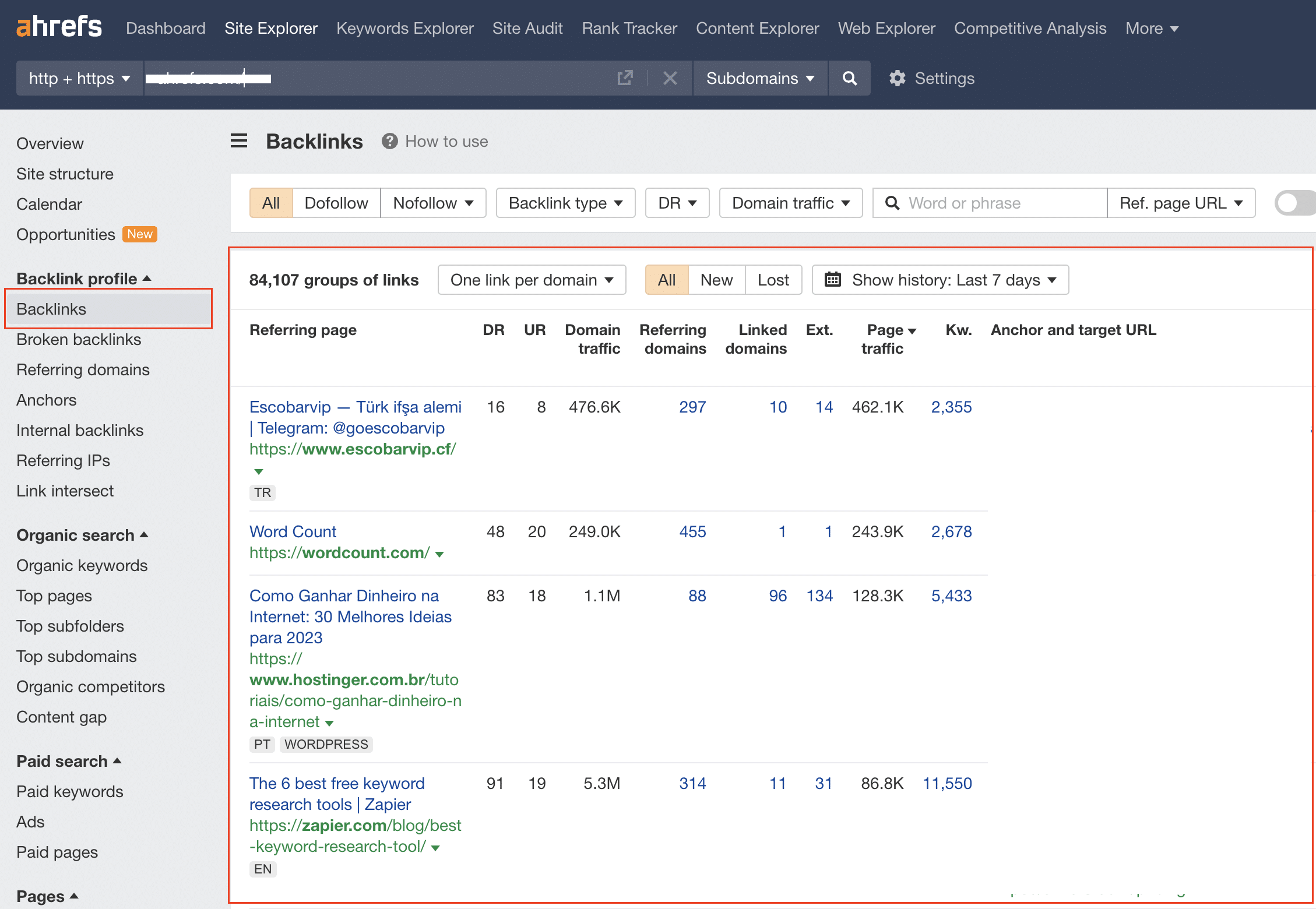
Just type in the domain in the Site Explorer module, go to the Backlinks report – and start digging for prospects!
- Social media: You can use social media platforms like Facebook, Twitter, LinkedIn, or Reddit to find and network with other site owners in your niche. You can join groups, follow hashtags, participate in discussions, and share your content. You can then build relationships with other site owners and ask them if they are interested in link swapping. One such group is Travel Blogger Link Swap Group.
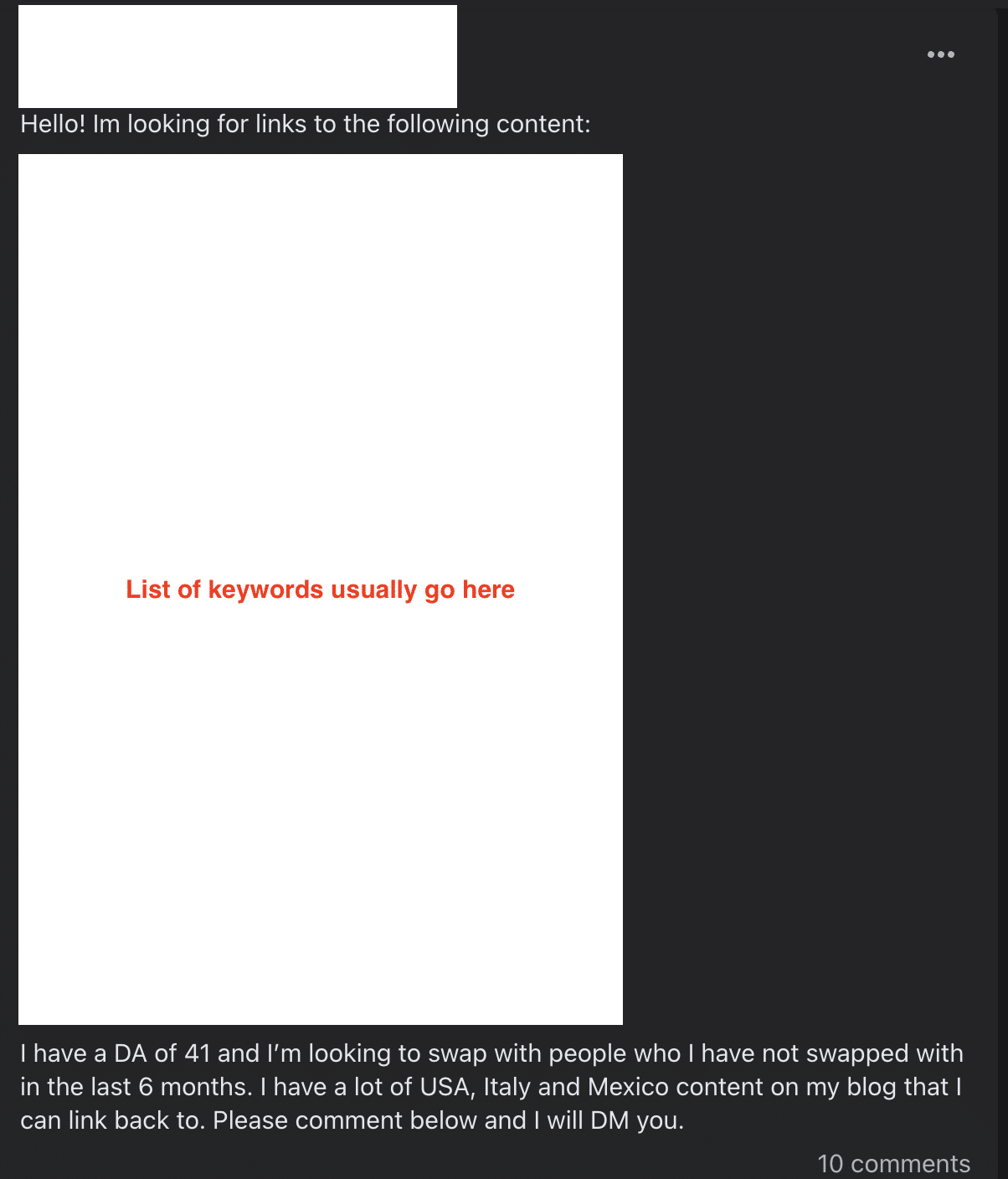
On Facebook, you can find topical groups where people are looking to swap links based on the topics they have on their sites and on offer for swapping. These groups can be an invaluable source of generating link building partners for the future.
These are some of the most common and effective ways to find link swap opportunities. However, you should not limit yourself to these methods only. You can also use other sources like forums, blogs, directories, podcasts, newsletters, etc. The key is to be creative and proactive in finding potential partners who share your goals and values.
How to Do Link Swaps Safely and Effectively
Once you have found some potential partners for link swapping, you need to know how to do it safely and effectively. Link swapping can be a great way to boost your SEO, but it can also backfire if done incorrectly or excessively.
Google has strict guidelines on how links should be used on the web. Google does not like unnatural or manipulative links that are intended to influence rankings or deceive users. Google considers these links as spam and may penalize your site if it detects them.
Therefore, you need to follow some best practices and guidelines when doing link swaps, such as:
- Use natural anchor texts: Anchor texts are the words that are used to link to another site. You want to use anchor texts that are natural and relevant to the context of the page and the content of the linked site. For example, if you are linking to a site that offers digital marketing courses, you can use anchor texts like “digital marketing courses”, “learn digital marketing”, “best digital marketing programs”, etc. You should avoid using anchor texts that are generic, keyword-stuffed, or unrelated to the linked site. For example, you should not use anchor texts like “click here”, “digital marketing training”, or “cheap digital marketing training”.
- Vary the link placement: Link placement refers to where you put the link on your page. You want to vary the link placement and avoid putting all your links in the same spot, such as the footer, the sidebar, or the end of the article. You should also avoid putting too many links on one page, as this may look spammy and unnatural. You want to distribute your links throughout your site and place them where they make sense and add value to the user. For example, you can put links in the body of your content, in the introduction, in the conclusion, in the headings, in the images, etc.
- Avoid excessive or reciprocal linking: Excessive or reciprocal linking refers to linking to another site too often or only linking to sites that link back to you. You want to avoid this practice, as it may signal to Google that you are trying to manipulate your rankings or engage in a link scheme. You want to limit the number of links you swap with one site and diversify your link profile with links from different sites. You should also link to other sites that do not link back to you, as this shows that you are providing genuine and useful information to your users.
These are some of the best practices and guidelines for doing link swaps safely and effectively. However, you should also be aware of some of the risks and challenges that come with link swapping, such as:
- Google penalties: Google may penalize your site if it detects that you are violating its guidelines on link swapping. Google may lower your rankings, remove your site from its index, or even ban your site altogether. Therefore, you need to be careful and follow Google’s rules when doing link swaps.
- Link spam: Link spam refers to low-quality or irrelevant links that are created for the sole purpose of manipulating rankings or deceiving users. Link spam can harm your SEO and reputation, as it can make your site look untrustworthy and unprofessional. Therefore, you need to avoid link spam and only swap links with reputable and relevant sites.
- Low-quality links: Low-quality links refer to links that come from sites that have low authority, traffic, or quality. Low-quality links can also harm your SEO and reputation, as they can dilute your link profile and signal to Google that your site is not valuable or credible. Therefore, you need to avoid low-quality links and only swap links with high-quality sites.
These are some of the risks and challenges that come with link swapping. However, you can overcome these issues by following some tips and solutions, such as:
- Use nofollow attributes: Nofollow attributes are HTML tags that tell Google not to follow or count a link for ranking purposes. You can use nofollow attributes on your link swaps if you want to avoid passing any link juice or influence to the other site. This way, you can still benefit from the traffic and exposure of the link swap without risking any penalties or spam issues.
- Monitor the link performance: Link performance refers to how well a link is performing in terms of traffic, rankings, authority, and conversions. You want to monitor the link performance of your link swaps regularly and see if they are bringing any positive results or negative effects to your site. You can use Google Analytics to track and analyze the link performance of your link swaps.
- Audit the link profile: The link profile refers to the collection of all the links that point to your site. You want to audit your link profile periodically and see if it is healthy and balanced. You can use Ahrefs to audit your link profile and see if there are any issues or opportunities for improvement.
These are some of the tips and solutions for doing link swaps safely and effectively. By following these tips and solutions, you can optimize your link swap strategy and get the most out of it.
How to Measure the Impact of Link Swaps on SEO
The last step in doing link swaps is measuring the impact of them on your SEO. You want to know how well your link swaps are working for you and if they are helping you achieve your SEO goals.
There are several metrics and indicators you can use to measure the impact of link swaps on SEO, such as:
- Traffic: Traffic refers to the number of visitors that come to your site from other sources. You want to measure how much traffic you are getting from your link swaps and see if it is increasing over time. You can use Google Analytics and Google Search Console to measure and analyze the traffic from your link swaps. You can also compare the traffic from your link swaps with the traffic from other sources, such as organic search, social media, email, etc. You want to see if your link swaps are driving more traffic than other sources or if they are complimenting them.
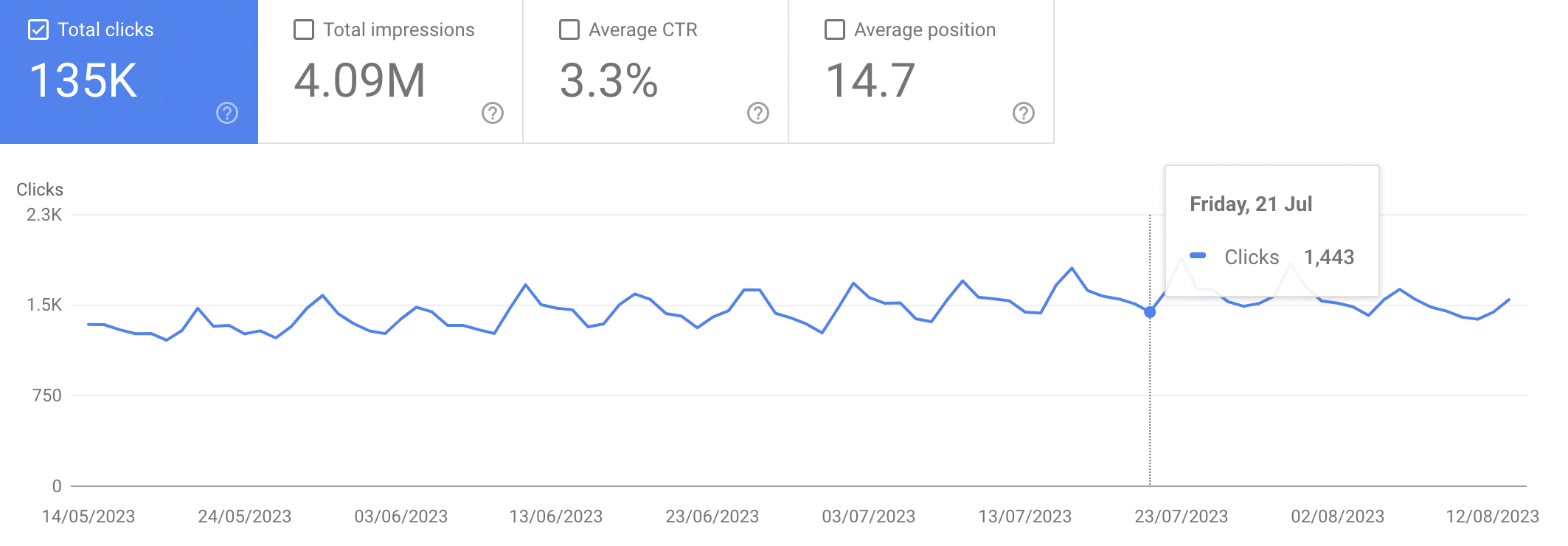
One of the methods to track link exchange performance is to compare the periods before and after the link swap, and calculate the increase in traffic in Google Search console.
- Rankings: Rankings refer to the position of your site on the search engine results pages (SERPs) for certain keywords. You want to measure how your link swaps are affecting your rankings and see if they are improving over time. You can use Ahrefs to track and analyze the rankings of your site and your link swap partners. You can also compare the rankings of your site with the rankings of your competitors and see if you are gaining an edge over them.
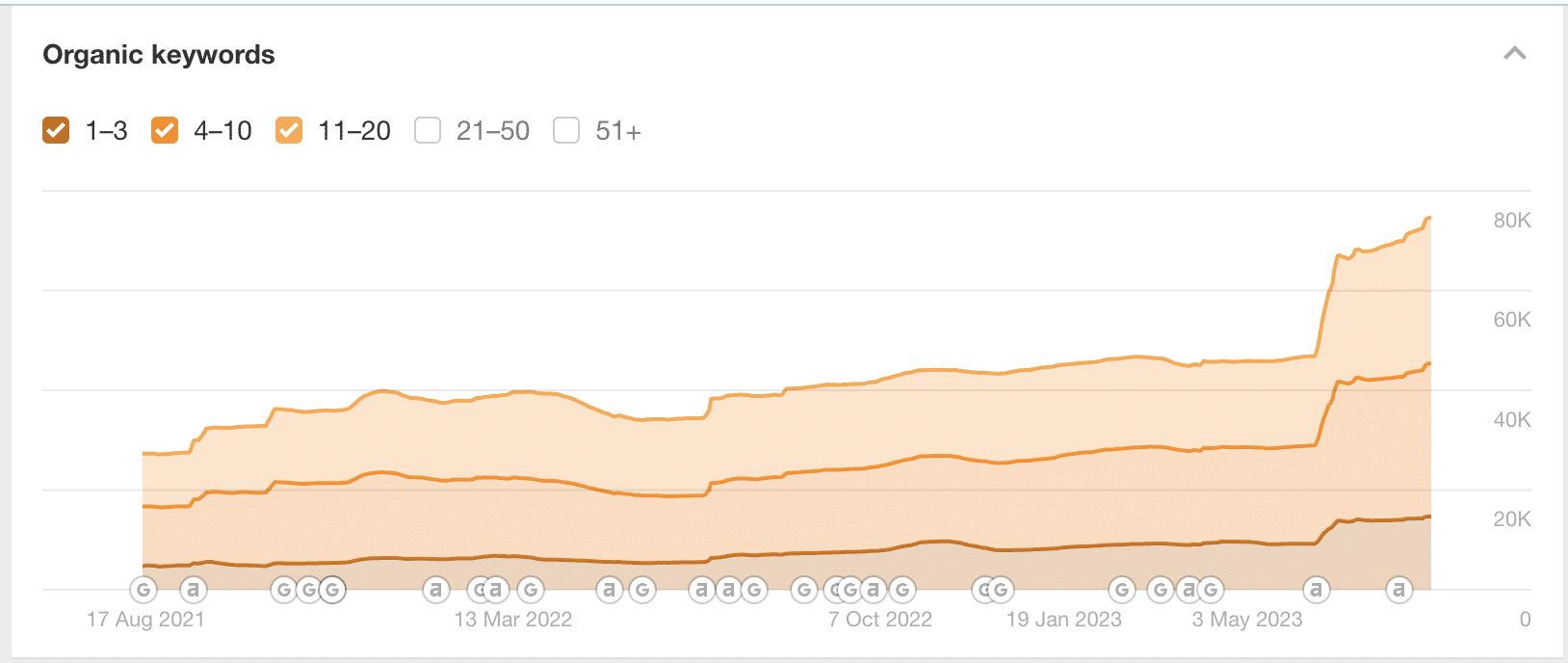
The Organic Keywords report in the Site Explorer module of Ahrefs can give you a deeper picture of how your rankings have started increasing after performing link swaps. You can also do a similar thing in Google Search Console, as you can see on the screenshot below:
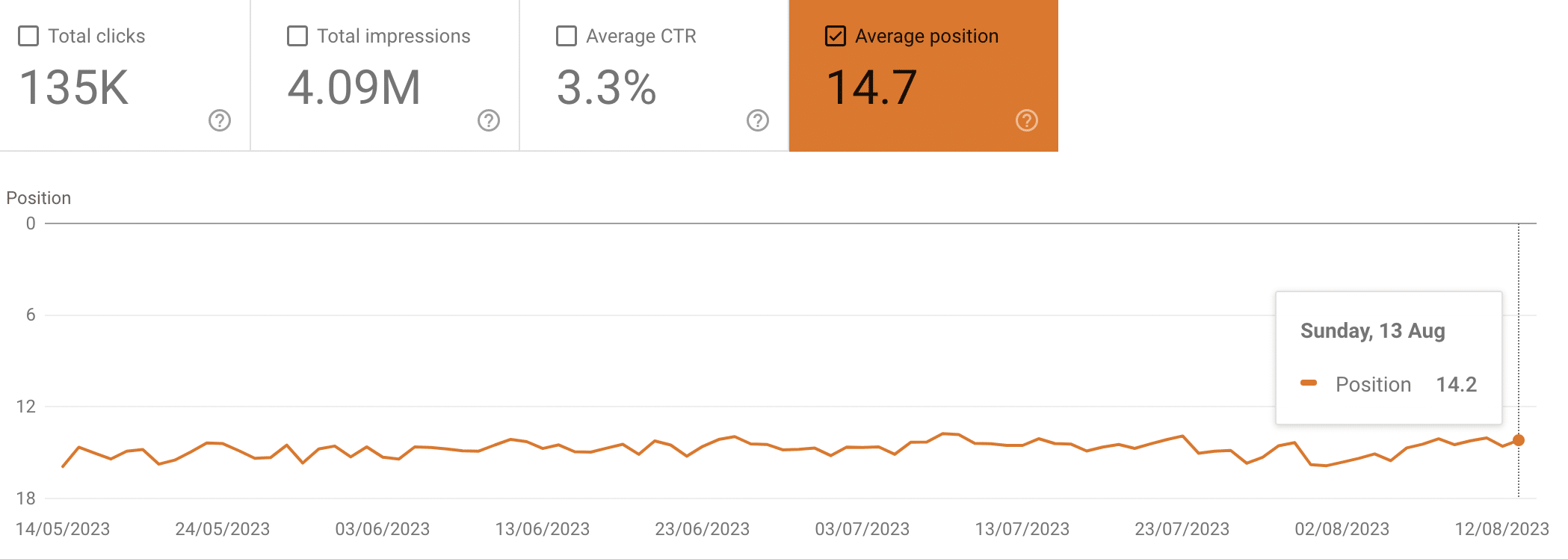
Google Search Console offers you to check keyword rankings based on Google’s internal data, and you can filter by page, specific keyword, or whole domain. It is extremely useful when you don’t have access to paid SEO tools.
- Authority: Authority refers to the level of trust and credibility that your site has in the eyes of Google and its users. You want to measure how your link swaps are influencing your authority and see if they are increasing over time. You can use Ahrefs to measure and analyze the authority of your site and your link swap partners. You can also use metrics like Domain Authority (DA), Page Authority (PA), Domain Rating (DR), or URL Rating (UR) to quantify the authority of your site and your link swap partners.
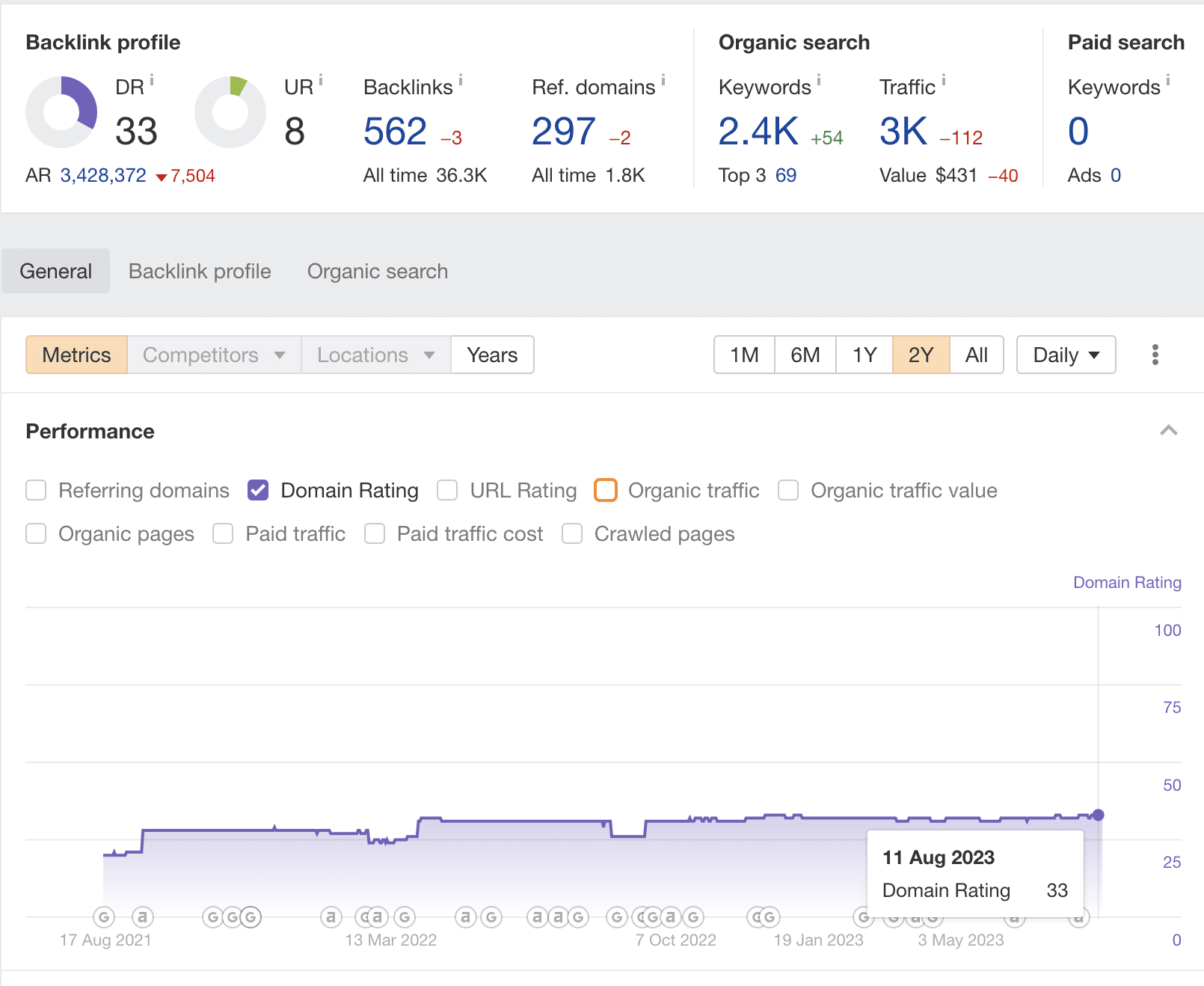
You can easily check the DR (Domain Rating) of your domains and domains you want to swap links with in the Site Explorer of Ahrefs. You can check the historical movement of the DR score which can be an important indicator of the site’s credibility.
- Conversions: Conversions refer to the actions that you want your users to take on your site, such as signing up, buying, subscribing, etc. You want to measure how your link swaps are impacting your conversions and see if they are increasing over time. You can use Google Analytics and Google Search Console to measure and analyze the conversions from your link swaps. You can also compare the conversions from your link swaps with the conversions from other sources, such as organic search, social media, email, etc. You want to see if your link swaps are generating more conversions than other sources or if they are supporting them.
These are some of the key metrics and indicators that you can use to measure the impact of link swaps on SEO. By using these metrics and indicators, you can evaluate and optimize your link swap strategy and get the most out of it.
Link Exchanges Can Be a Reliable Strategy – If Done RIGHT!
Link swapping is one of the most popular and effective link building strategies for SEO in 2023. It involves getting other websites to link back to your site in exchange for linking back to theirs. Link swapping can help you boost your authority, traffic, rankings, and conversions.
However, link swapping is not without risks and challenges. You need to know how to find link swap opportunities, how to do link swaps safely and effectively, and how to measure the impact of link swaps on SEO.
If you need additional help with any link building strategy – contact us and we will devour your competition!

